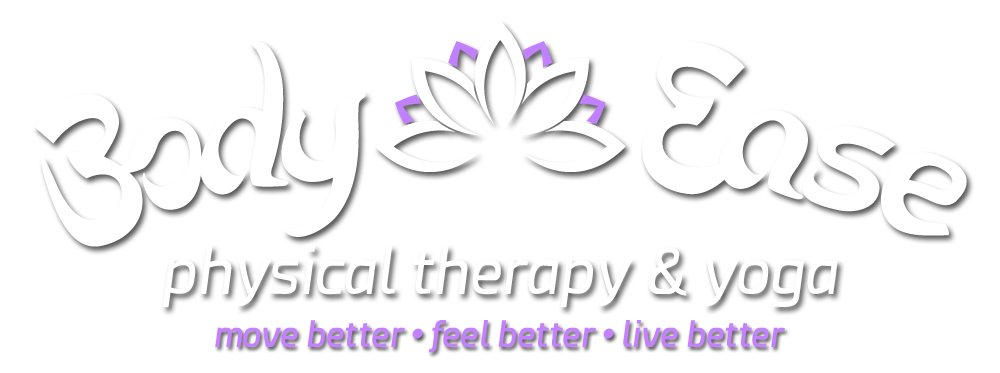PHYSICAL THERAPY
Humans are made to move. It’s how we interact with the world. When we are limited in our movement by pain, injury or neuromuscular dysfunction, we don’t feel well, which influences our choices and our thinking, and subsequently, we are not able to enjoy life to its fullest.
Physical therapy can help resolve old injuries, chronic pain, limited range of motion, inefficient movement patterns, and neuromuscular dysfunction. Simply put, physical therapy can help you move and feel better.
Teaching yoga for 15 years and studying the way people move inspired me to pursue a doctorate degree in physical therapy. Yoga can be very healing if done correctly, but if there is an underlying structural or biomechanical issue, yoga is not as effective, and in some cases, does more harm than good. Teaching yoga has also trained me to “see” the person as a whole person and has influenced the way I work with my physical therapy clients, forming a partnership for better health and function.
I specialize in resolving neck, back and pelvic girdle pain and dysfunction. But since everything is connected, I also work with shoulders, hips, knees, etc. I am one of only a handful of physical therapists in the nation trained in Fascial Counterstrain techniques by The Jones Institute and the Counterstrain Academy. This technique, which has its roots in osteopathic medicine, is very gentle and relaxing for the client, and often provides pain relief when other traditional physical therapy techniques have failed.
Fascial Counterstrain utilizes a diagnostic “cranial scan,” which indicates not only what areas of the body need treatment, but also what systems of the body need attention. I treat all of the body’s fascial systems, including vascular, visceral, nervous, and musculoskeletal systems. Fascial Counterstrain releases trapped inflammation, which removes protective mechanisms and compensations, as well as treats the primary source of the dysfunction, so the body can heal. You can learn more about the technique at counterstrain.com and jicounterstrain.com .
In an effort to provide the best care possible, I offer private-pay one-hour appointments. No referral from your doctor is needed. Just call/text/email and schedule your appointment. I look forward to working with you.
Frequently Asked Questions
What should I wear to the appointment?
Please wear comfortable, non-restrictive clothing. Good examples are work-out clothing, yoga pants, shorts, t-shirts.
Do you accept insurance/what forms of payment do you accept?
I do not accept any health insurance. You can pay with credit/debit cards, including HSA cards, or cash or checks.
What should I do/not do after the session and what should I expect?
Some people get sore and/or tired after a treatment, so be sure to drink plenty of water and rest after your appointment. Take it easy for 24 hours, avoiding strenuous activity to allow time for your body to heal.
How many treatment sessions are generally needed to experience relief?
Simple recent problems can often be resolved with lasting relief in 1-2 visits. Most patients report significant relief within 1-4 sessions. Complicated presentations or long-standing chronic issues can require a longer course of treatment. If no change is noted in 4-6 visits you may need to contact your physician for further evaluation.
What is Fascial Counterstrain and how come I’ve never heard of it?
Fascial Counterstrain is a precise, gentle Manual Therapy technique that can resolve pain and dysfunctions by releasing trapped inflammation in the body’s connective tissues (fascia). This technique diminishes pain, restores flexibility and posture, promotes tissue health, restores normal muscle tone, and optimizes anatomical function.
Fascial Counterstrain is a relatively new technique in the field of manual medicine. Brian Tuckey PT started developing the technique in 1997 and did not start teaching the technique until 2004. The power and scope of Fascial Counterstrain continues to evolve and progress and has its roots in the osteopathic technique Strain-Counterstrain, developed by Dr. Lawrence Jones in the 1950s.


